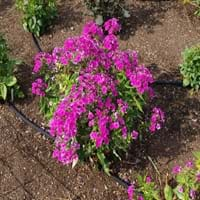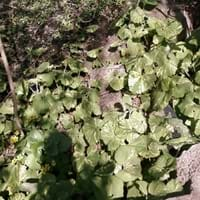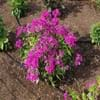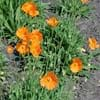Life Span
Perennial
Perennial
Origin
Northeastern United States, Mid-Atlantic United States, Southeastern United States, North-Central United States, Central United States, South-Central United States, Canada
China, Japan, Korea
Types
Blue Ice, Eventide, Starfire
Not Available
Number of Varieties
Not Available
Habitat
Dappled Shade, Shady Edge, Woodland Garden
gardens, Grassland, Homesteads, Open areas
USDA Hardiness Zone
4-8
5-9
Sunset Zone
1a, 1b, 2a, 2b, 3a, 3b, 4, 5, 6, 7, 8, 9, 10, 11, 12, 13, 14, 18, 19, 20, 21
2a, 2b, 3a, 3b, 4, 5, 6, 7, 8, 9, 10, 14, 15, 16, 17, 18, 19, 20, 21, 22, 23, 24
Habit
Upright/Erect
Clump-Forming
Minimum Height
Not Available
Minimum Width
Not Available
Flower Color
Purple, Magenta
Light Yellow, Ivory
Flower Color Modifier
Bicolor
Bicolor
Fruit Color
Not Available
Not Available
Leaf Color in Spring
Chartreuse, Gold
Green, Light Green, Light Yellow, Ivory
Leaf Color in Summer
Chartreuse, Gold
Green, Light Yellow, Ivory
Leaf Color in Fall
Chartreuse, Yellow green, Tan
Green, Light Yellow, Ivory
Leaf Color in Winter
Not Available
Not Available
Plant Season
Summer, Fall
Spring, Summer, Fall
Sunlight
Full Sun, Partial Sun
Partial shade, Full Shade
Type of Soil
Clay, Loam, Sand
Clay, Loam, Sand
The pH of Soil
Acidic, Neutral, Alkaline
Acidic, Neutral, Alkaline
Soil Drainage
Well drained
Poorly Drained
Bloom Time
Summer, Late Summer, Early Fall, Fall
Early Spring, Late Winter
Tolerances
Not Available
Wet Site
Where to Plant?
Ground
Ground, Pot
How to Plant?
Seedlings
Divison, Stem Planting
Plant Maintenance
Medium
Medium
Watering Requirements
Average Water Needs, Doesn't tolerate standing water
Allow soil to be completely dry in between waterings, Keep ground moist, Needs 2-3 times watering per week, Over-head watering, Requires watering in the growing season
In Summer
Lots of watering
Lots of watering
In Spring
Moderate
Moderate
In Winter
Average Water
Average Water
Soil pH
Acidic, Neutral, Alkaline
Acidic, Neutral, Alkaline
Soil Type
Clay, Loam, Sand
Clay, Loam, Sand
Soil Drainage Capacity
Well drained
Poorly Drained
Sun Exposure
Full Sun, Partial Sun
Partial shade, Full Shade
Pruning
Remove damaged leaves, Remove dead branches, Remove dead leaves
Remove deadheads, Requires very little pruning, Shape and thin as needed
Fertilizers
General purpose slow-acting granular fertilizer
All-Purpose Liquid Fertilizer
Pests and Diseases
Powdery mildew, Rust, Septoria leaf spot, Stem canker
Pests and diseases free, Red blotch
Plant Tolerance
Drought
Wet Site
Flower Petal Number
Single
Not Available
Foliage Texture
Medium
Bold
Foliage Sheen
Matte
Glossy
Attracts
Butterflies
Not Available
Allergy
Pollen
no allergic reactions
Aesthetic Uses
Borders, Ground Cover
Showy Purposes
Beauty Benefits
Not Available
Not Available
Environmental Uses
Air purification
Air purification
Medicinal Uses
No Medicinal Use
No Medicinal Use
Part of Plant Used
Not Available
Whole plant
Other Uses
Used as Ornamental plant
Not Available
Used As Indoor Plant
No
Yes
Used As Outdoor Plant
Yes
Yes
Garden Design
Cutflower, Feature Plant, Mixed Border, Wildflower
Bog Garden, Container, Feature Plant, Water Gardens
Botanical Name
PHLOX paniculata 'Goldmine'
PETASITES japonicus 'Variegatus'
Common Name
Garden Phlox, Goldmine Phlox
Giant Butterbur, Japanese Butterbur, Variegated Butterbur
In Hindi
Goldmine Phlox
variegated butterbur
In German
Goldgrube Phlox
bunte Pestwurz
In French
Phlox Goldmine
pétasite panachée
In Spanish
Phlox Goldmine
butterbur abigarrado
In Greek
Goldmine Phlox
διαφοροποιημένα butterbur
In Portuguese
Phlox Goldmine
butterbur variegada
In Polish
Goldmine Phlox
barwny Lepiężnik
In Latin
.org Phlox
varius butterbur
Phylum
Magnoliophyta
Not Available
Class
Magnoliopsida
Not Available
Order
Solanales
Asterales
Family
Polemoniaceae
Asteraceae
Clade
Angiosperms, Asterids, Eudicots
Angiosperms, Asterids, Eudicots
Tribe
Phlocideae
Senecioneae
Subfamily
Polemonioideae
Not Available
Number of Species
Not Available
Season and Care of Goldmine Phlox and Variegated Butterbur
Season and care of Goldmine Phlox and Variegated Butterbur is important to know. While considering everything about Goldmine Phlox and Variegated Butterbur Care, growing season is an essential factor. Goldmine Phlox season is Summer and Fall and Variegated Butterbur season is Summer and Fall. The type of soil for Goldmine Phlox is Clay, Loam, Sand and for Variegated Butterbur is Clay, Loam, Sand while the PH of soil for Goldmine Phlox is Acidic, Neutral, Alkaline and for Variegated Butterbur is Acidic, Neutral, Alkaline.
Goldmine Phlox and Variegated Butterbur Physical Information
Goldmine Phlox and Variegated Butterbur physical information is very important for comparison. Goldmine Phlox height is Not Available and width Not Available whereas Variegated Butterbur height is 60.00 cm and width 120.00 cm. The color specification of Goldmine Phlox and Variegated Butterbur are as follows:
Goldmine Phlox flower color: Purple and Magenta
Goldmine Phlox leaf color: Chartreuse and Gold
Variegated Butterbur flower color: Light Yellow and Ivory
- Variegated Butterbur leaf color: Green, Light Green, Light Yellow and Ivory
Care of Goldmine Phlox and Variegated Butterbur
Care of Goldmine Phlox and Variegated Butterbur include pruning, fertilizers, watering etc. Goldmine Phlox pruning is done Remove damaged leaves, Remove dead branches and Remove dead leaves and Variegated Butterbur pruning is done Remove deadheads, Requires very little pruning and Shape and thin as needed. In summer Goldmine Phlox needs Lots of watering and in winter, it needs Average Water. Whereas, in summer Variegated Butterbur needs Lots of watering and in winter, it needs Average Water.





